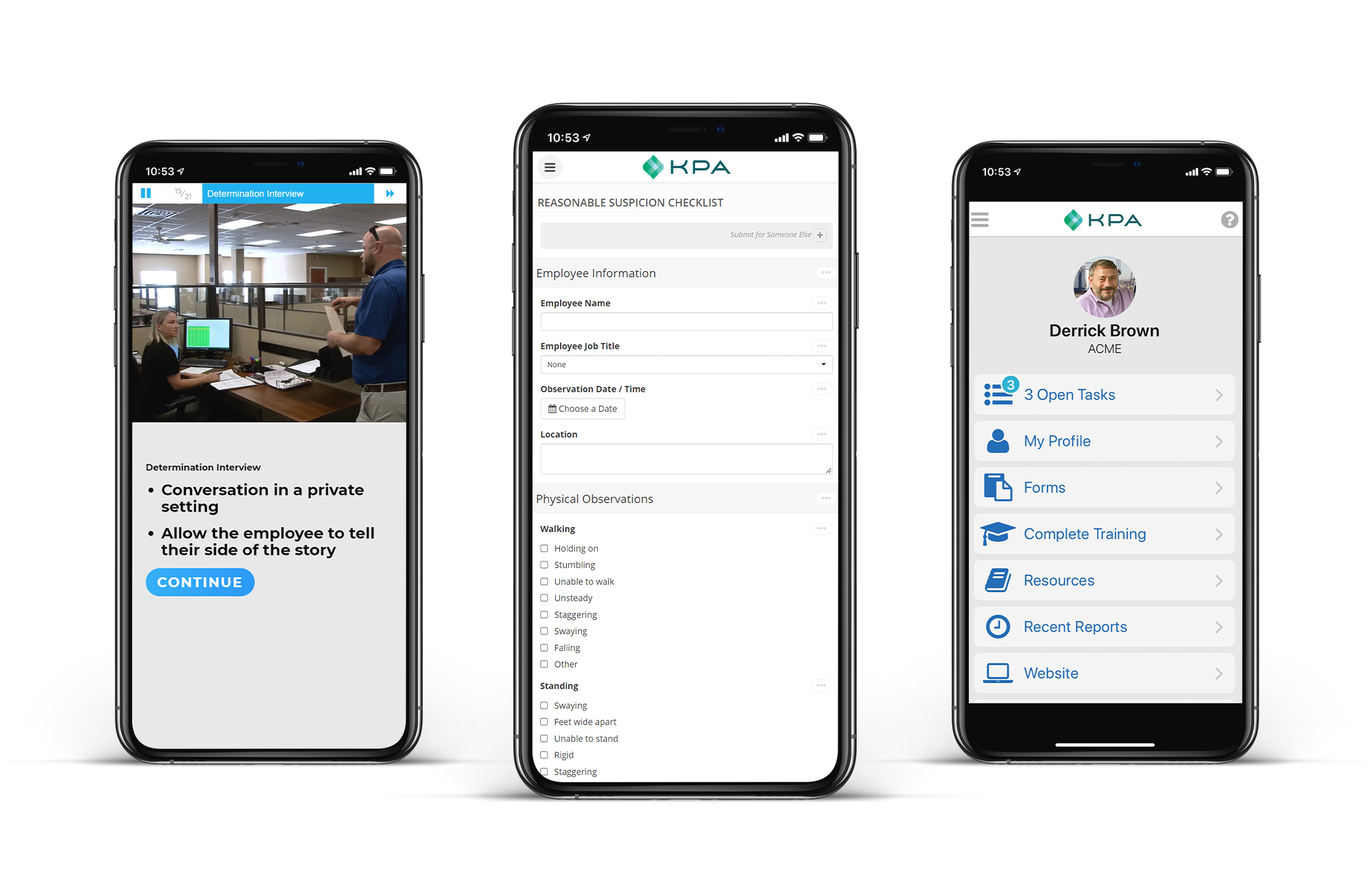Best Practices to Combat Substance Abuse in the Construction Industry
The construction industry is one of the most hazardous industries that alone accounted for 1 in 5 worker fatalities in 2019 (source). The hazards of this type of work – including falls, being struck by or caught in heavy machinery, and injuries from overexertion – result in higher injury and fatality rates than in other sectors.
A 2015 study from the Substance Abuse and Mental Health Services Administration (SAMHSA) concluded that the construction industry has more drug and alcohol abuse than any other sector, second only to hospitality and food service. According to the study, among full-time construction workers:
- 16.5% (1.6 million people) reported drinking heavily in the previous month
(the CDC defines heavy drinking as 15 or more drinks per week for men and eight or more for women). - 11.6% (1.1 million people) said they had used illicit drugs
(marijuana, cocaine, methamphetamines, opioids, and others) in the past month. - 14.3% (1.4 million people) reported addiction to alcohol or other drugs.
Workplace Injuries and Substance Abuse:
A Vicious Cycle
Construction workers often treat injuries or the pain caused by repetitive and strenuous work by self-medicating with alcohol, cannabis, opioids, or other drugs.
Consider this scenario: A construction worker sustains an injury on the job but needs to keep working, so self-medicates with drugs or alcohol. This puts them at further risk of injury or death. These intoxicating substances affect motor activity slowing down a person’s reaction times and decision-making. In a hazardous environment such as a construction site prone to accidents, this can be extremely dangerous.
The impacts of substance abuse in the construction industry include
- Injuries and fatalities
- Loss of productivity
- Cost overruns
- Legal issues
- Absenteeism
Worker Sustains Injury
Self-Medicates
Increases Safety Risks
Combating Substance Abuse with Proven Best Practices
Associated Builders and Contractors created the Safety Performance Report to present a clear picture of the remarkable impact of leading indicator use on a company’s safety performance. Of all the leading indicators they researched, substance abuse programs rose to the top of the list of actions construction companies can take to impact workplace safety. According to the report:
Robust substance abuse prevention programs/policies with provisions for drug and alcohol testing where permitted lead to a 70% reduction in TRIR and a 73% reduction in DART rates.
Key components of a successful substance abuse program include:
ABC’s Key Components of Safety
The ABC has compiled the components of a substance abuse program that contributes to a world-class safety program.
Best in Class Program
- The company’s safety policy explains its substance abuse program
- The policy includes random, pre-employment and reasonable suspicion substance abuse testing
- The policy is consistent and actively enforced
- Supervisory personnel are trained in workplace substance abuse recognition
- Employee substance abuse prevention education initiatives are offered
- The company has an employee assistance program (EAP)
- The company keeps counseling and testing records
- Specialty contractors are contractually required to have programs equal to or exceeding the general contractors
Solid Program
- The company has substance abuse verbiage in the employee safety policy
- Substance abuse testing is for pre-employment only
- The company makes a minimal effort to enforce policy
- Supervisors are trained in hazards of substance abuse on the job
- Specialty contractors are contractually required to conduct pre employment testing
Mediocre Program
- The company has substance abuse verbiage in its safety manual
- Drug/alcohol testing is inconsistent
- Company makes no or little effort to enforce the policy
- Subcontract language does not include compliance
Poor Performing Program
- The company has no policy regarding substance abuse testing
How many of these high-performing components do you have in your program?
How KPA Helps Construction Companies Maintain a Drug-Free Workplace
KPA is here to help you maintain a comprehensive substance abuse prevention program with our software and training.
Distribute Policy Documents to Every Employee
Construction companies can manage and distribute drug and alcohol policies with KPA’s EHS software platform. Assign policies to new hires and track their acknowledgments. You can send follow-up reminders to ensure all employees comply.
Train Your Employees and Your Managers
Deliver training to your teams as well. KPA offers several online drug and alcohol courses, including:
- Alcohol in the Workplace (FMCSA-Compliant)
- Drugs in the Workplace (FMCSA-Compliant)
- Drug-Free Workplace Programs
- Reasonable Suspicion Testing
- Responsible Alcohol Service
Assign and track these courses using KPA’s integrated learning management system.
Track Reasonable Suspicion Incidents from Your Phone
Use the pre-built checklist when a manager or supervisor suspects drug or alcohol use based on the physical appearance and behavior of the employee.
One-third of all incidents on construction job sites are drug- or alcohol-related. Take action now to make your job sites a safer place to work. Contact us for more information.


